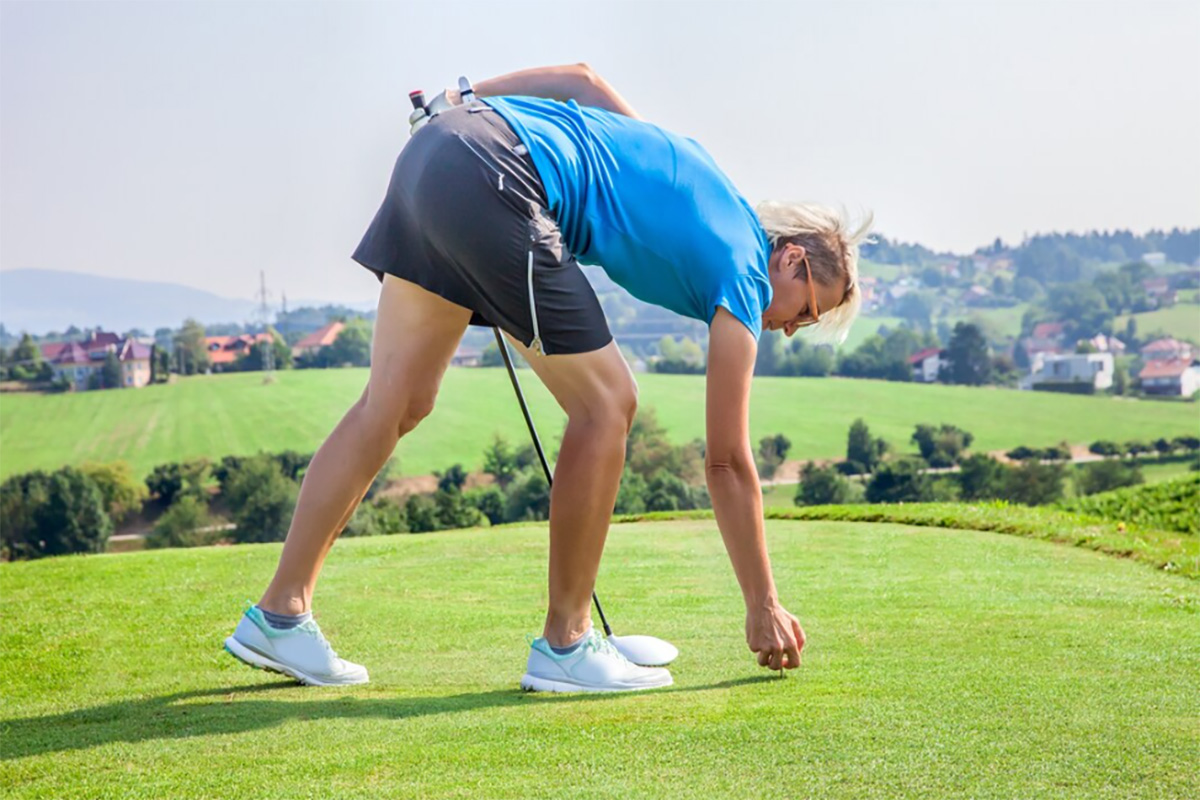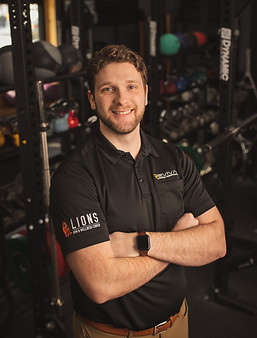Introduction
Golf is often seen as a low-impact and leisurely sport, but it also has a significant risk of injuries. Understanding and preventing these injuries is important for both amateur and professional golfers to enjoy the game without the setback of physical ailments. This comprehensive guide delves into the most common golf injuries, offering insights into treatments, prevention techniques, and ways to stay safe on the green.
If you want to learn more about the difference between physical rehabilitation vs physical therapy in injury recovery. Consider resources provided by Revival Physical Therapy to gain valuable insights.
Understanding Golf Injuries
With its unique blend of precision, power, and repetition, golf subjects players to specific injury risks. These injuries can result from overuse, improper technique, or the sudden force exerted during a powerful swing. According to the British Journal of Medicine, professional golfers are more likely to sustain this injuries, with annual injury rates ranging from 31.0% to 90.0% and a lifetime incidence of 60.0-88.5%. This highlights the importance of understanding these common ailments as the first step toward prevention. By being informed, golfers can address issues promptly should they arise, minimizing downtime and promoting a healthier, more enjoyable golfing experience.
Most Common Golf Injuries
Lower / Upper Back Strains and Pain
Lower and upper back strains are among the most common golf injuries, stemming from the sport’s repetitive swinging motion. This motion puts considerable stress on the spine and surrounding muscles, potentially leading to minor strains or even disc injuries. Symptoms include muscle stiffness and sharp pain during movement. In severe cases, difficulty in standing straight.
Golfer’s Elbow (Medial Epicondylitis)
Golfer’s elbow, or Medial Epicondylitis, is an inflammation of the tendons that attach the forearm muscles to the inside of the elbow. It is primarily caused by the overuse of these muscles, which can occur from repetitive golf swings or gripping the club too tightly. Symptoms include pain and tenderness on the inside of the elbow, possibly extending along the forearm.
Shoulder Injuries (Rotator Cuff Tendinitis)
Rotator cuff tendinitis affects the shoulder’s rotator cuff, a group of muscles and tendons that secure the arm to the shoulder joint. This injury is commonly seen in golfers due to the repetitive overhead motion of the golf swing. Symptoms include pain and swelling in the shoulder, especially when lifting the arm.
Tennis Elbow (Lateral Epicondylitis)
Tennis elbow is much like golfer’s elbow but affects the tendons on the elbow’s outside. It results from the overuse of forearm muscles, leading to pain and tenderness around the elbow joint. Although more common with tennis, this injury also occurs among golfers.
Knee Pain or Injury
The knee is another common site of injury for golfers due to the stress placed on it during the golf swing. This can lead to conditions such as tendonitis or meniscus tears. Symptoms include pain, swelling, and difficulty bending the knee. s.
Wrist Injuries
Wrist injuries in golfers can range from tendinitis to sprains and fractures, often resulting from the impact of the club hitting the ground or a repetitive strain from swinging. Symptoms include pain, swelling, and reduced range of motion in the wrist.
Hip Injuries
The hip joint can suffer from overuse injuries in golfers, given the rotational stress involved in the swing. These injuries can manifest as muscle strains, bursitis, or labral tears, with symptoms including pain, stiffness, and reduced mobility.
Addressing Golf Injuries

Addressing golf injuries promptly and effectively is important for players seeking to return to the sport they love with minimal downtime. The right treatment not only aids in quicker recovery but also ensures that the healing process is thorough, reducing the likelihood of recurring issues. Here’s a closer look at the various treatment methods that are commonly recommended for addressing golf injuries.
Physical Therapy
Physical therapy stands out as a cornerstone in the recovery process from golf injuries. Tailored to the specific needs of the injured golfer, physical therapists devise personalized programs that aim to restore strength, flexibility, and proper mechanics. These programs often include exercises designed to target the affected area while also focusing on overall body conditioning to prevent future injuries.
R.I.C.E Method
For acute injuries, the R.I.C.E method (Rest, Ice, Compression, Elevation) serves as a tried-and-true first aid treatment. This approach is particularly effective in the initial phase following a golf-related injury, aimed at reducing pain, swelling, and inflammation.
- Rest is crucial to prevent further damage to the injured area.
- Ice applied in short sessions helps to calm inflammation and reduce pain.
- Compression, using bandages or wraps, can limit swelling and provide support.
- Elevation of the injured part above heart level further assists in minimizing swelling.
Implementing the R.I.C.E method promptly after an injury in golf can significantly impact the recovery timeline and comfort level of the golfer.
Medication
In the early stages of a golf injury, anti-inflammatory medications can be helpful in managing pain and reducing inflammation. Over-the-counter options like ibuprofen and naproxen are commonly used, but it’s important for individuals to consult with a healthcare provider to ensure these medications are appropriate for their specific health profile and injury situation.
Bracing
Bracing or taping injured areas can provide additional support and stability during the recovery process, potentially allowing golfers a gradual return to play. Braces can help to limit movements that might worsen the injury while still allowing for some level of activity. The type and extent of bracing depend on the injury’s severity and location, with options ranging from simple wrist supports to more complex knee braces designed for specific conditions.
Surgery
While many golf injuries can be managed with non-surgical treatments, there are instances where surgical intervention becomes necessary to repair damaged tissues or structures. Surgery is typically considered when conservative treatments have not provided sufficient relief or in the case of significant structural injuries.
How To Prevent Golf Injuries?
With appropriate preventive measures, golfers can significantly reduce their risk of injury. This ensures that their time on the course remains enjoyable and free from unnecessary pain. Here’s how to prevent golf injuries effectively:
Warm-Up Properly
A thorough warm-up routine is essential to prepare your body for the demands of golf. This should include dynamic stretches focusing on the major muscle groups used in golf, such as the shoulders, back, legs, and wrists. Engaging in practice swings gradually increases heart rate and blood flow to these critical areas, ensuring they are more pliable and ready for the activity ahead. This not only improves performance but also significantly reduces the risk of muscle strains and ligament injuries.
Practice Good Technique
Poor swing mechanics are a cause of common injuries in golf. Working with a coach or a professional to refine your swing can prevent undue stress on the body. A good swing technique is efficient, utilizing the body’s natural movements and alignments to minimize strain on any single part of the body. Proper technique also involves learning how to use the ground for leverage and how to sequence your swing for optimal power and minimal risk.
Strengthen and Condition
Strength and conditioning are crucial for injury prevention in golf. Exercises tailored specifically to the demands of golf help build the necessary muscle strength and endurance needed to play the sport without injury. Focus on core stability, flexibility, and balance, as well as strengthening the muscles used in the golf swing. These exercises not only improve your game but also make your body more resilient to the stresses golf places on it.
Use Proper Equipment
Golf equipment should match your physical attributes and style of play. Clubs that are too long, too short, too heavy, or with the wrong grip size can alter your swing mechanics and put unnecessary strain on your body. Custom-fitted clubs that suit your height, strength, and swing style can significantly reduce the risk for injury. Additionally, choose golf shoes with good support and traction to prevent slips and falls.
Carry and Use Your Bag Wisely
The way you carry your golf bag can have a significant impact on your risk of back and shoulder injuries. Using a pushcart rather than carrying your bag on your shoulders distributes the weight more evenly and reduces strain. If you prefer to carry your bag, ensure it has dual straps and you use them correctly to balance the load across your back.
Stay Hydrated and Protected
Dehydration and sun exposure are not only immediate health risks but can also lead to longer-term injury risks by impairing concentration and physical performance. Drinking plenty of water before, during, and after your round and using sunscreen, hats, and protective clothing can help prevent these risks.
Listen to Your Body
One of the most important preventive measures is to listen to your body. Signs of fatigue, discomfort, or pain should not be ignored. These are indicators that your body needs rest or that your technique may need adjustment. Taking rest days and avoiding overuse is important for long-term injury prevention.
Mind the Environment
Finally, be mindful of the playing environment. Adjust your play on days of extreme weather, and be cautious of uneven terrains that can increase the risk of falls and ankle sprains. Understanding how environmental factors affect play and taking necessary precautions can help avoid injuries.
Exercises for Preventing Golf Injuries

Incorporating specific exercises into your routine is important to prevent the risk of common golf injuries. These exercises are designed to improve flexibility, strengthen the muscles used in golf, and enhance overall stability. By regularly performing these exercises, golfers can not only prevent injuries but also improve their performance on the course.
Supine Trunk Rotation
This exercise enhances spinal mobility and flexibility, which is crucial for a smooth and effective golf swing. To perform:
- Lie on your back with your knees bent and feet flat on the ground.
- Stretch your arms out to the sides with palms facing down.
- Keeping your shoulders and arms flat on the floor, slowly rotate your knees to one side.
- Hold for a moment, then rotate to the other side.
- Repeat 10-15 times on each side.
Side Plank
The side plank strengthens the oblique muscles and improves core stability, supporting a powerful golf swing. To perform:
- Lie on your side with legs extended and feet stacked.
- Prop your body up on your forearm, aligning your elbow under your shoulder.
- Lift your hips off the ground, forming a straight line from head to feet.
- Hold the position for 20-30 seconds, then switch sides.
Bird Dog
This exercise enhances core strength and stability, which are crucial for maintaining balance during the golf swing. To perform:
- Start on your hands and knees, hands under shoulders and knees under hips.
- Extend one arm forward and the opposite leg back, keeping both straight.
- Hold for a few seconds, then return to the starting position.
- Alternate sides, performing 10-15 repetitions per side.
Shoulder Abduction + External Rotation
Strengthening the shoulder muscles supports a healthy range of motion, reducing the risk of shoulder injuries. To perform:
- Hold a light dumbbell in one hand with your arm at your side.
- Lift your arm to the side until it’s parallel with the ground, then rotate your forearm upward.
- Return to the starting position and repeat 10-15 times before switching arms.
Shoulder Adduction + Internal Rotation
This exercise works the opposite muscles to the previous, promoting balanced shoulder strength. To perform:
- Hold a light dumbbell in one hand and stand with that side next to a door or wall.
- Keep your elbow bent at 90 degrees and press your arm towards your body.
- Rotate your forearm towards your stomach.
- Repeat 10-15 times before switching arms.
Wrist Flexion
Strengthening the wrist flexors can help prevent wrist injuries. To perform:
- Sit with your forearm on a table, hand off the edge, palm up.
- Hold a lightweight and gently bend your wrist upward.
- Lower and repeat for 10-15 repetitions before switching wrists.
Wrist Extension
This exercise strengthens the wrist extensors, complementing the wrist flexion exercise. To perform:
- Sit with your forearm on a table, hand off the edge, palm down.
- Hold a lightweight and gently lift your wrist upward.
- Lower and repeat for 10-15 repetitions before switching wrists.
Rowing
Rowing exercises strengthen the back, shoulders, and arms, improving posture and power in the golf swing. To perform:
- Use a rowing machine or a resistance band attached to a fixed object.
- Pull the handles or bands towards your lower ribs, squeezing your shoulder blades together.
- Slowly return to the starting position and repeat for 10-15 repetitions.
Pull Downs
Pull downs target the latissimus dorsi, enhancing upper body strength and stability for golf. To perform:
- Use a lat pull-down machine or a resistance band over a door.
- Pull the handles or band down towards your chest, keeping your back straight.
- Slowly return to the starting position and repeat for 10-15 repetitions.
Conclusion
In conclusion, golfers must be aware of the potential for injuries while playing the sport. Understanding the common injuries that can occur is essential for taking preventive measures. By implementing proper warm-up routines, using correct equipment, and maintaining good form, golfers can reduce the risk of injury. Additionally, seeking professional guidance and treatment when needed is crucial for addressing and managing any injuries that may arise. With proper care and attention, golfers can continue to enjoy the game they love safely and sustainably.
Improve your golf game and prevent injuries with Revival Physical Therapy. Our experienced therapists specialize in physical therapy and sports rehab, helping you recover from golf-related injuries while improving your flexibility and strength. Don’t let pain hold you back. With expert care, you can get back on the course pain-free and perform at your best.
FAQs
How do you practice golf when injured?
When injured, practicing golf requires a cautious and modified approach to avoid worsening the condition. First, consult a healthcare professional to understand the nature and severity of your injury and receive guidance on what activities you can safely perform. Depending on the advice, you may focus on non-impact aspects of your game, such as putting or gentle chipping, ensuring you do not strain the injured part.
What is the best way to recover from golf?
Recovery from golf involves a combination of rest, proper nutrition, hydration, and targeted exercises. After a round, it’s essential to cool down with stretches that focus on the muscles most used during play, such as the back, shoulders, and legs. Hydrating and eating a balanced meal can help replenish energy stores and aid muscle recovery.
How do I prepare my body for golf?
Preparing your body for golf involves a comprehensive fitness routine that focuses on flexibility, strength, and endurance. Begin with dynamic stretches to warm up the major muscle groups used in golf, including the shoulders, back, hips, and legs, to increase flexibility and prevent injuries. Strength training should target the core, legs, and upper body, emphasizing stability and power for your swing. Cardiovascular exercises, such as jogging, cycling, or swimming, improve endurance, allowing you to maintain energy levels throughout a round. Lastly, practicing specific golf exercises can enhance your swing mechanics and overall performance on the course.


